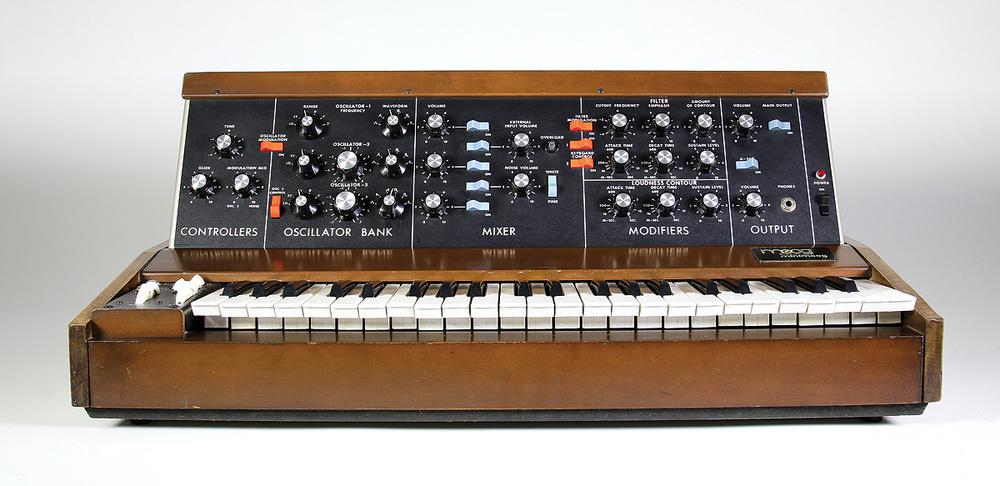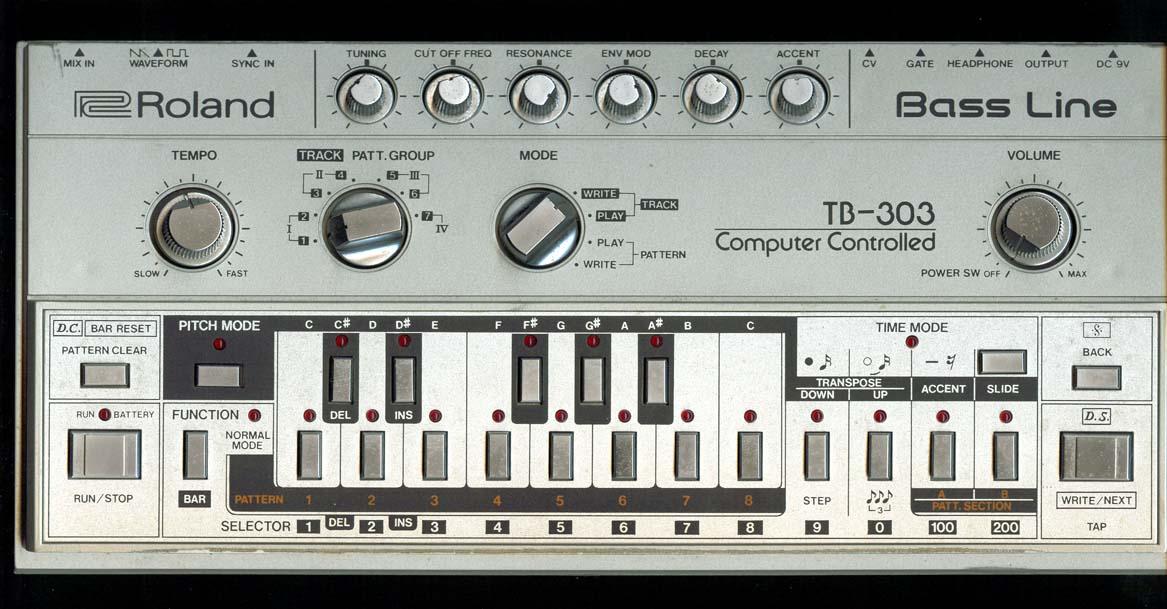Families of Subtractive Synthesis
During the past decades, the subtractive principle has been implemented in many different ways, evolving along with the technology. Although based on the same principle, different families of subtractive synthesizers can be identified, all based on the same basic components. Representatives of these families have different characteristics and are used for different musical applications. Without claim to completeness these families are:
Analog modular
Analog monophonic
Analog polyphonic
Virtual analog / analog modeling
Analog Modular
The first subtractive synthesizers were large, cupboard-like devices and rather expensive. Although multiple voices are possible, they were designed as monophonic instruments. Two well known and opposite examples are the first models released by Bob Moog on the US east coast and Don Buchla on the west coast. The latter makes use of distortion techniques, whereas the Moog systems used the standard subtractive paradigm.
Moog Synthesizer (1965)
Switched on Bach, Wendy Carlos, 1968
Bob Moog brought the typical VCO-VCA-VCF approach in a rack with a keyboard. It could hence be performed like a typical piano-like instrument. In productions like Switched on Bach it was made polyphonic through dubbing with tape recording techniques. This video shows the artist, Wendy Carlos, in an interview (since the LP is not available there):
Analog Monophonic
Analog monophonic synthesizers used the same techniques, yet in a more compact design and not fully modular. This made them more affordable and hence more disseminated and used.
Minimoog Model D (1970)
The idea of monophonic analog subtractive synthesis - and maybe of the synthesizer in general - is usually associated with the Minimoog.

Designed as a fully integrated musical instrument, the Minimoog could be used in virtuous expressive musical performances, was portable and affordable. Chick Corea's Minimoog solo, starting at 4:20, is an example of a virtuous performance, making use of modwheel and pitchbend:
EMS VCS 3 (1969)
The semi-modular EMS allows access to the signal flow with a patching matrix. It is thus especially suited for experimental sounds, as used by Pink Floyd in Welcome to the Machine for the wobbling machine sounds in the beginning:
Roland TB 303 (1982)
Although released several years later - and for a different application - the TB303 fits best into this family. The TB 303 was intended to be used as an accompanying instrument for musicians. It has a different interface, a programmable step sequencer.

Due to the quirky filters it failed as a bass accompaniment but gave birth to techno and related genres. It creates the typical acid basses and leads:
Analog Polyphonic
After the monophonic analog synths of the 70s, which were intended as solo instruments, came the polyphonic ones. Polyphonic analog synthesizers shaped the sound of 80s pop (and especially synth-pop) music with their recognizable sound, often used as pads and harmonic foundation or for bass lines.
Yamaha CS-80 (1977)
Oberheim OBx (1979)
Virtual Analog
When digital technology was ready, it took over and various synthesizers were released which emulated the principles of subtractive synthesis. These devices were much cheaper and the digital means could provide more voices with better memory options. Virtual analog synthesizers were the backbone of trance development. They lack some of the analog warmth but are tighter in sound. Some examples:
Clavia Nord Lead
1995
Roland JP-8000
1996
The Supersaw
Access Virus
1997
Yamaha AN1x
1997
